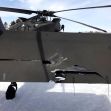The family of a passenger killed in the January 29 collision between American Eagle Flight 5342, operated by PSA Airlines, and a U.S. Army Black Hawk helicopter near Washington, D.C., has filed a federal tort claim seeking $200 million in damages. The crash, which sent both aircraft into the Potomac River during the approach to Ronald Reagan Washington National Airport, was the deadliest U.S. plane crash in more than two decades and killed all 67 people on board.
The victim, 43-year-old Dustin Miller, was returning from a business trip when the regional jet struck the helicopter during its night vision training mission. According to the family, their goal is to see changes in aviation safety procedures to help prevent similar incidents in the future.
The claim alleges that the Federal Aviation Administration (FAA) and the U.S. Army failed to address known safety hazards and operated under unsafe air traffic procedures. It cites more than 15,000 near misses between helicopters and commercial aircraft near Reagan National in the past four years, many involving helicopters exceeding altitude limits.
During National Transportation Safety Board (NTSB) hearings held from July 30 to August 1, investigators reported that the Black Hawk was flying at 278 feet, exceeding the 200-foot restriction for that route. The Army has stated that inaccurate readings from the helicopter’s barometric altimeter may have contributed to the altitude violation. The use of night vision goggles limited the crew’s field of view, and FAA staff had previously raised concerns about the helicopter route’s proximity to commercial traffic. Proposals to change or remove the route were rejected.
NTSB Chair Jennifer Homendy criticized the FAA during the hearing, stating that the agency failed to act on known risks and calling for immediate safety improvements.
Under tort law, individuals can seek monetary damages from parties whose wrongful acts or negligence cause injury or death. In cases involving federal agencies, the Federal Tort Claims Act requires that a claim be submitted for administrative review before any lawsuit can proceed. This filing must outline what occurred, identify the government’s alleged fault, and specify the damages sought. The agency then has six months to review the claim and can choose to settle, deny it, or take no action. If no agreement is reached or the claim is denied, the claimant may file a lawsuit in federal court. Once in court, the case can result in a settlement, a trial verdict, or dismissal, depending on the evidence and legal findings.
Following the collision, U.S. Secretary of Transportation Sean P. Duffy issued permanent restrictions in March on most nonessential helicopter operations near Reagan National, allowing only emergency and government flights. The NTSB’s final report on the crash is expected next year.
The FAA and the Army have six months to respond to the Miller family’s claim. If the matter is not resolved within that period, the family can proceed with a federal tort lawsuit.






